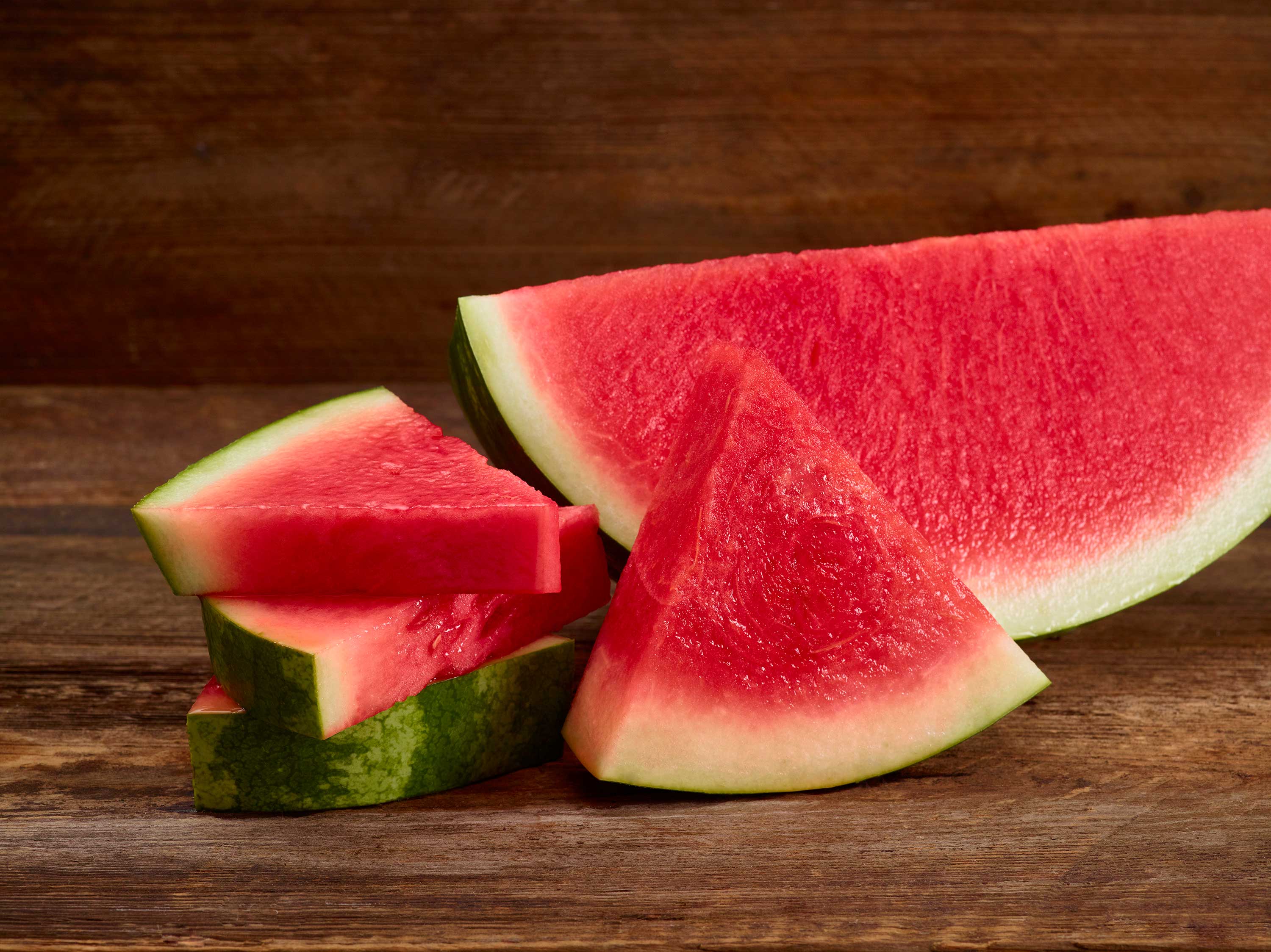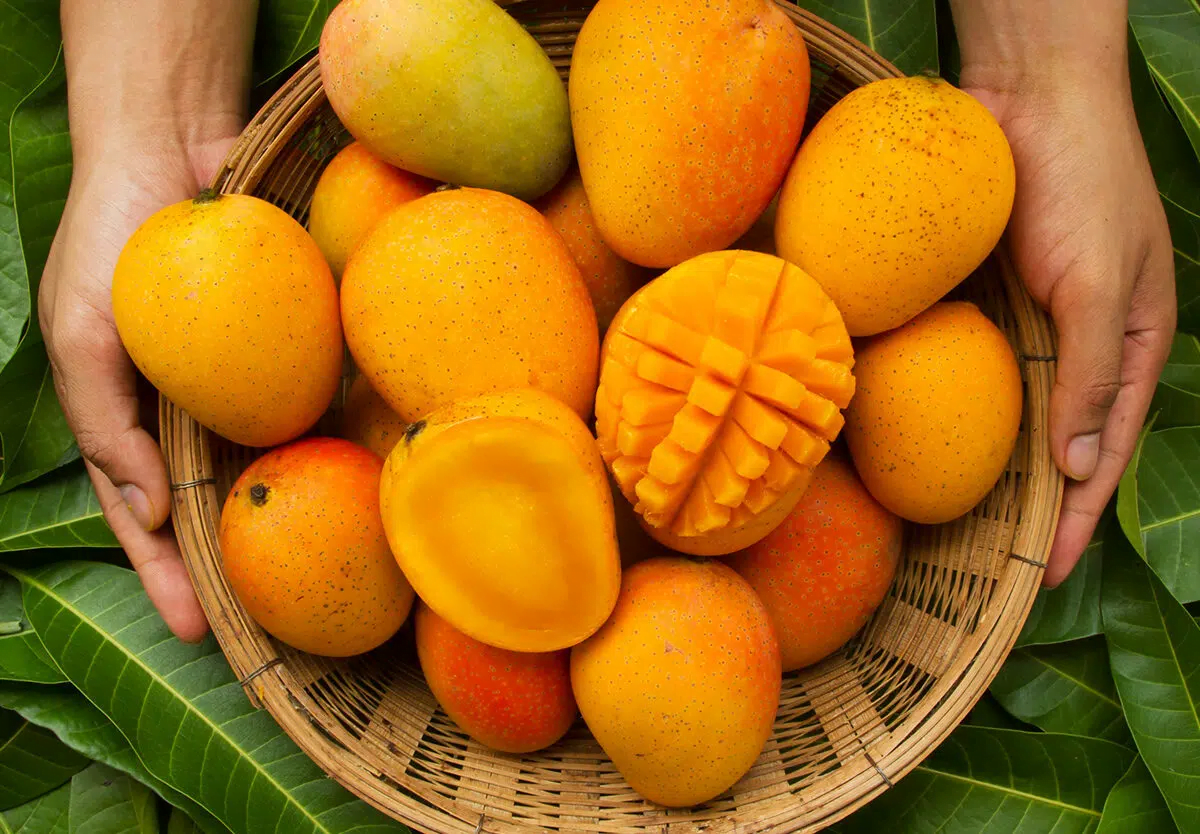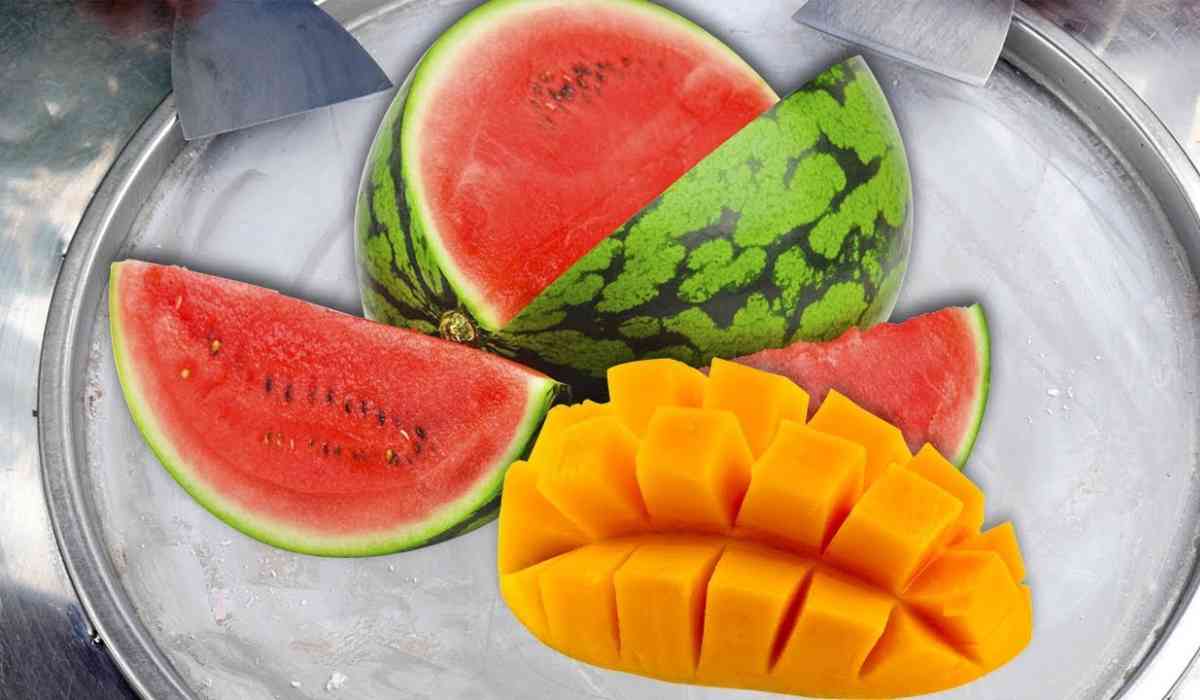Summer is here, and with it comes the thirst-quenching refreshment of watermelons and the sweet indulgence of mangoes. These fruits are not only packed with essential nutrients but are also a staple during the hotter months. However, as the demand for these juicy delights rises, so does the risk of adulteration and chemical treatments that can pose serious health risks.
Recently, food safety authorities have intensified their efforts to combat the sale of chemically-treated fruits, including watermelons and mangoes, which are commonly adulterated to enhance their appearance and shelf life. This article delves into recent crackdowns, practical tips to identify adulterated fruits, and the nutritional benefits these fruits offer.

The Watermelon Adulteration Crackdown
2,000 Kgs of Adulterated Watermelons Seized in Tamil Nadu
The Food Safety Department in Tamil Nadu has recently intensified its efforts to ensure the safety of summer fruits. During raids, over 2,000 kg of substandard watermelons were seized and destroyed. These fruits were found to be either artificially colored or beginning to rot. Such adulteration is a major concern as it not only affects the taste and quality of the fruit but could also pose significant health risks. To combat this, the Food Safety and Drug Administration (FDA) has launched campaigns to raise awareness about the dangers of adulterated watermelons and offer consumers tips for determining the quality of the fruit themselves.

How to Detect Adulteration in Watermelons
To avoid consuming chemically-treated watermelons, here are some easy methods to check for adulteration:
-
Cotton Ball Test: Cut the watermelon in half and rub the red flesh with a cotton ball. If the cotton ball remains clean, the watermelon is natural. If it turns red, it indicates that the fruit has been artificially colored.
-
Tissue Test: Rub a piece of watermelon with a white tissue or paper. If the color of the fruit transfers to the tissue, it may have been treated with artificial substances.
Tips for Buying Safe and Ripe Watermelons
Buying a naturally ripe and safe watermelon requires attention to detail. Here’s how to pick the best one:
-
Check the Shape: Opt for watermelons that are symmetrical in shape. Irregular shapes may indicate uneven ripening or spoilage.
-
Inspect the Skin: A ripe watermelon typically has a deep green skin with darker stripes. Avoid those with pale skin or soft spots, as they could be signs of overripeness.
-
Use the Thumping Method: Tap the watermelon with your knuckles. A deep, hollow sound indicates ripeness.
-
Feel the Weight: Choose heavy watermelons, as they are likely to have more water content and be juicier.
-
Look for Sugar Spots: Brown freckles or streaks (sugar veins) on the watermelon indicate sweetness.
-
Check the Belly Spot: This is the area where the watermelon rested on the ground. A creamy yellow or golden belly spot signifies ripeness.
Nutritional Value of Watermelon and Its Seeds
Watermelon isn’t just a hydrating fruit—it’s also packed with essential nutrients. Here's what you get from this refreshing summer fruit:
-
Water Content: Watermelon is composed of over 90% water, making it an excellent source of hydration during hot months.
-
Vitamins A, C, and B6: These vitamins are crucial for maintaining skin health, boosting immunity, and supporting heart health.
-
Lycopene: This antioxidant may help protect the skin from damage caused by UV rays and reduce the risk of certain cancers.
-
Watermelon Seeds: A handful of dried watermelon seeds contains magnesium, iron, zinc, and phosphorus. These nutrients are essential for bone health, skin care, and blood circulation.
The Mango Adulteration Issue: A Growing Concern
150 Crates of Chemical-Ripened Mangoes Seized in Goa
Mangoes, often dubbed the “king of fruits,” are a summer favorite. But unfortunately, these sweet fruits are also subject to adulteration through artificial ripening, which can have severe health implications. In a recent inspection conducted by the Food and Drug Administration (FDA) in Goa, authorities seized 180 crates of mangoes, along with around 450 kg of bananas, due to concerns over chemical ripening. This year’s crackdown targeted wholesale mango units in Siolim and Mapusa, where authorities found mangoes treated with harmful chemicals, particularly calcium carbide, which is known for its carcinogenic properties.

Chemicals Used in Mango Ripening and Their Side Effects
Calcium carbide is one of the most commonly used chemicals for ripening mangoes. Though easily available and cheap, it poses significant health risks due to the presence of arsenic and phosphorus hydride. Prolonged exposure to this chemical can lead to serious health issues, including:
-
Vomiting, Diarrhea, and Weakness
-
Skin Ulcers and Permanent Eye Damage
-
Neurological Effects and Shortness of Breath
Due to these risks, food authorities have issued warnings to consumers to be cautious when purchasing mangoes, especially in markets where the fruits are ripened artificially.
8 Ways to Identify Artificially Ripened Mangoes
It’s crucial to know how to spot chemically-treated mangoes. Here are 8 methods to help you identify artificially ripened mangoes:
-
Check the Skin Color: Artificially ripened mangoes usually have a uniform color, often a more intense yellow or orange. Natural mangoes tend to have variations in color, depending on the ripening process.
-
Smell Test: Naturally ripened mangoes have a sweet, fruity aroma. In contrast, artificially ripened mangoes may smell more like chemicals or have an odd scent.
-
Firmness Check: Artificially ripened mangoes often feel softer or mushier due to the breakdown of the fruit's cell walls by chemicals. Naturally ripened mangoes tend to have a firmer texture.
-
Look for External Damage: Mangoes treated with chemicals are more likely to have bruises, spots, or other external blemishes. Avoid buying mangoes with these signs.
-
Conduct a Taste Test: If the mango tastes bland or has an off-putting aftertaste, it may be artificially ripened.
-
Soaking Method: Submerge mangoes in a bucket of water. Naturally ripened mangoes will sink, while artificially ripened ones tend to float.
-
Baking Soda Test: Soak mangoes in water with a pinch of baking soda for about 15-20 minutes. If the mango’s color changes after rinsing, it might have been chemically treated.
-
Matchstick Test: Light a matchstick and bring it near the mangoes. If they are chemically ripened, they may sparkle or even catch fire. This method is risky, so use caution.
Benefits of Mangoes
Mangoes are not only delicious but also packed with nutrients that promote overall health:
-
Vitamin C: Helps boost the immune system and fight infections.
-
Vitamin A: Essential for healthy vision and skin.
-
Fiber: Promotes digestion and supports gut health.
-
Antioxidants: Protect against oxidative stress and inflammation.
Despite their health benefits, mangoes are high in natural sugars and calories, so people with diabetes or those watching their sugar intake should consume them in moderation.
Watermelons and mangoes are synonymous with summer enjoyment, but unfortunately, they are also prone to adulteration and chemical treatments. Fortunately, by following simple tests and being cautious while shopping, consumers can ensure they are picking safe, naturally ripened fruits. Whether it’s watermelon’s hydrating benefits or mango’s rich vitamin content, these fruits are a refreshing and nutritious way to beat the summer heat. Stay informed, stay safe, and enjoy your summer fruits with peace of mind!
With inputs from agencies
Image Source: Multiple agencies
© Copyright 2025. All Rights Reserved Powered by Vygr Media.























